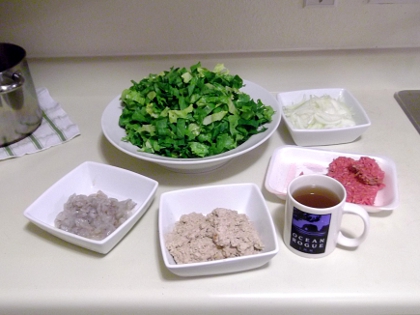Positioned at the crossroads of West, Central, and Southern Africa, Cameroon’s cuisine is a microcosm of Sub-Saharan Africa. The nation is comprised of over two hundred ethnic groups speaking over two hundred languages, so cross-cultural exchange of ideas and customs can be seen everywhere. Add to that the influence of European colonization (French primarily, but at different times the territory was overseen by the Portuguese, Germans, and British), and we couldn’t wait to explore the country’s food traditions.
Cameroon quick facts:
- Capital: Yaoundé
- Population: 20,549,221 (2013 estimate)
- Notable Cameroonians: Eriq Ebouaney, Samuel Eto’o
Cameroonian cooks craft their menus from the foods commonly available to them: starches like cassava, rice, plantains, yams, corn, beans, and millet; freshwater fish; and bush meats like porcupine and pangolin. Shrimp is of great dietary and economic importance as well; Cameroon was named by Portuguese explorers who noted the abundance of shrimp in its estuaries and dubbed the land Rio dos Camarões, “River of Shrimp.” One ingredient that particularly grabbed our interest was ndoleh, a species of veronia (a wild green) common in Central Africa that is packed with vitamins with a distinct, bitter taste.
The ndoleh leaves lend their name to Cameroon’s national dish ndolé (recipe follows), a rich stew of the greens with boiled mashed peanuts and usually some type of seafood and/or ground meat. We found tips online that the leaves could be found for purchase in dried form at Latino, Asian, or Indian markets but were unavailable to find them in our area. Our first thought for a replacement was dandelion greens, which can be bitter to the point of being unpalatable when out of season (their season is the early Spring) so we ruled that out as well. Many of our sources recommend spinach as a supermarket-available alternative to ndoleh so we decided to use spinach in our recipe. To give our greens a little bit of a bitter punch, we also used a head of escarole, a slightly bitter lettuce available in many supermarkets here in the United States. A variety of meats and seafoods are cited as possible ndolé ingredients; we had ground beef and shrimp in our freezer and decided, “Close enough!”
Ndolé
adapted from Fab Book, The Congo Cookbook, Africlectic, and Immaculate Bites
SERVES ABOUT SIX HUNGRY ADULTS
- one bunch each escarole and spinach
- 1 cup peanuts
- one 2″ piece of ginger
- 4 cloves garlic
- 1/2 pound ground beef
- 1 cup vegetable stock
- 1 medium onion, julienned
- 1/2 pound shelled shrimp, cut into small pieces
- rice for serving
First, the escarole and spinach leaves were cut into about three-quarter inch strips and washed. With all those greens to wash, a sink full of cold water is the only way to go:
Meanwhile, the peanuts were covered with water in a saucepan, brought to a boil, and simmered for about ten minutes until softened:

Once boiled, the peanuts were drained, and were puréed along with the ginger (peeled and cut into small pieces) and garlic (also peeled, of course) in our food processor:
Once the greens were drained and the onions and shrimp cut we were ready to begin putting the ndolé together:

In keeping with Cameroonian tradition (where meats are seldom browned before going into a stew), the stock and ground beef were brought to a simmer together in our Dutch oven:
Stirring frequently and breaking up the clumps of meat as we went along, the beef was cooked through in just four minutes or so:
Next went in the peanut-ginger-garlic paste:
…followed immediately by the onions:
…and finally the shrimp:
The stew was brought back to a simmer, then turned down to low (to not overcook the shrimp) and cooked gently for about twenty minutes:
The greens were the final addition:
…which were stirred into the ndolé and cooked until just tender, about another two minutes:
…and that’s it! Brought to the table in a large serving bowl:
…we served our version of ndolé atop a big mound of steamed long-grain rice:
There is a lot to like about this dish. Despite our best efforts, there was very little bitterness in the end, and what remained was a beefy, shrimpy, vegetably flavor party for our taste buds. Packed with protein and vitamins, we felt incredible afterwards. The rare combination of rich, satisfying, and healthy, we feel that ndolé is welcome at our dinner table any time of year.













